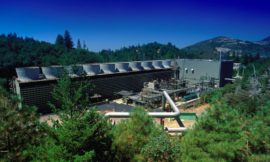In this episode, Justin Williams and I talk about what you need to know about the Net Royalty Acre. Listen (or read below) to find out more about the difference between the Net Royalty Acre (NRA) and Net Mineral Acre (NMA) units of measure. To calculate how many Net Royalty Acres you own, download my free Net Royalty Acre Calculator Worksheet.
Please reach out and let me know if this is useful! Also, if you come across any interesting articles you would like me to cover in a future episode, please send it to feedback@mineralrightspodcast.com. Thanks! – Matt
Using the embedded player above, you can download the episode to your computer or listen to it here! Be sure to also subscribe on iTunes!
The units of measure that we use to determine just how much right to the minerals you own in a tract of land is the Net Mineral Acre (or NMA) or the Net Royalty Acre (or NRA).
This is different than the “gross acreage” which refers to the total amount of acreage in a tract of land (basically the surface footprint).
What is a Net Mineral Acre?
Generally speaking, a mineral acre is defined as full (100%) mineral interest in one (1) acre of land.
The way to calculate it is to multiply your gross acreage by the fractional interest in the minerals you own in that tract. For example, if the gross acreage in a given tract is 160 Acres (say the Northeast Quarter or NE/4 of a 640 acre section (in other words 640 acre section x ¼ for the Northeast Quarter = 160 acres),
If your decimal ownership in that 160 acre tract is 1/10th, you own 160 x 1/10 which equals 16 Net Mineral Acres (or NMA).
What is a Net Royalty Acre?
Typically, the term Net Royalty Acre means the mineral royalty interest in ⅛ of 8/8 in an under one (1) acre of land. In layman’s terms, what that is saying is basically the number of net mineral acres that you own assuming it were leased at 1/8th (12.5%) royalty.
Why is this important?
It allows for an apples-to-apples comparison between different tracts of land in an area. You may hear of another mineral owner getting an offer to buy their interest for say $5,000 per Net Mineral Acre. If you don’t know their royalty rate, it is hard to compare that offer to an offer that you may have received in the same area.
How to Calculate How Many NRA’s You Own
- Converting the number of net mineral acres to net royalty acres is easy
- You need to know # of NMA and your royalty rate.
- Simply divide your royalty decimal by 0.125 and then multiply this number by your NMA to get your NRA
Another mathematically equivalent way to calculate this:
- NRA = NMA x lease royalty rate x 8
Click Here To Download a FREE Net Royalty Acre Calculator Worksheet
In the example above where your neighbor got the purchase offer of $5,000 per NMA, if you know their royalty rate you can figure out the $ / NRA to compare your offer with, even if you don’t know the number of net mineral acres they own (you can assume 1 NMA for the purposes of converting to NRA).
Let’s say your neighbor is leased at a ⅛ (12.5%) royalty, in which case you would just multiply ⅛ x 8 = 1 and multiply by the $/NMA which in this case is 5,000. 5,000 x 1 = 5,000 so their offer would be equivalent to $5,000 / NRA.
Let’s say that you are leased at ¼ (25%) royalty. You have 16 Net mineral acres.
Your NRA = 16 x (1/4) x 8 = 4 x 8 = 32 Net Royalty Acres.
If you have received a purchase offer and want to compare it to your neighbor’s offer of $5,000/NRA, you can take the total amount that someone is offering you and convert it to $/NRA to compare apples to apples.
Let’s assume you received an offer to purchase your minerals of $6,000/NMA x 16 NMA = $96,000).
To figure out what this would be on a $/NRA basis, simply:
Take the total amount of 96,000 and divide by the # of NRA’s:
96,000 / 32 NRA = $3,000 / NRA !
So while the offer you got of $6,000/NMA is actually higher than your neighbor’s offer on a Net Mineral Acres basis, it is actually lower than your neighbor’s offer of $5,000/NMA when you normalize it down to Net Royalty Acres. This is because your minerals are leased at 25% royalty vs. their 12.5% royalty and assuming all other things being equal (# of NMA, same Spacing Unit, same lease terms), you would get paid twice the amount in royalties on any production (because 25/12.5 = 2)!
This is why you need to be very careful about getting excited about a purchase offer that says something like “$10,000 / acre for minerals assuming 25% royalty rate” if you know that your royalty rate is really 12.5%, the offer is probably going to be closer to 5,000/acre when you tell them that you are leased at 12.5%.
Typically, buyers will proportionally increase or decrease their offer if your royalty is different than the assumption stated on their offer letter.
To help make sure you are reviewing any offers you receive on an apples to apples basis, you need to know the offer in terms of $/NRA (or that the offer outlines the terms from a royalty rate assumption, NMA assumption, and the lump sum amount – in which case you can evaluate the offer on a $/NRA basis).
To calculate your NRA, you can download my FREE Net Royalty Acre Calculator Worksheet here.
Special Cases
The previous examples assume no Non-Participating Royalty Interest (NPRI) is carved out of your minerals. We talk more about what an NPRI is in Episode 2: “What’s the Difference Between Minerals and Royalties?”
If there is an NPRI that exists, you would have to determine the # of net royalty acres by taking your royalty rate and subtracting the NPRI from it and then dividing by 12.5%.
Some may suggest using the NRA calculation for comparing offers between different properties as mentioned. At the end of the day many folks prefer to define the sale in terms of Net Mineral Acres as well as the total amount that will be paid, along with any terms for how the offer will be reduced should any royalty burdens like a NPRI exist.
Also, the above examples assume you are leased. If you have unleased minerals then the Net Royalty Acre unit of measure doesn’t really apply (except in helping you understand the impact of different royalty rates). In this case if you are negotiating the sale of your unleased minerals, ask the potential buyer what royalty rate they used in their calculations so you can compare that with the going royalty rate in your area to see if it is comparable. If they used a 12.5% royalty rate in their assumptions but the going rate is 15%, ask them what their offer would be based on a 15% royalty rate and get it in terms of both $/NMA and lump sum amount (another way would be to use this information to make a counter offer at 20% higher than their original offer).
Practical Application
At my mineral rights consulting company, Silverheels Investments LLC, we don’t use value on a Net Royalty Acre basis as the primary metric. This is because in the due diligence process we determine what the royalty rate is if the minerals are leased and base the value on that specific case. Or, if they are unleased, we do research to see what nearby owners are getting and usually base it on the average royalty rate in the area.
That said, it is something we use to look at when reviewing comparable sales and is useful when trying to understand the going rate in an area to check our valuation.
When helping my consulting clients, I use it in the same manner to help them evaluate any offers they get on an apples to apples basis.
Click Here To Download a FREE Net Royalty Acre Calculator Worksheet
Thanks for Listening!
To share your thoughts:
- Leave a comment or question below (we read each one and your question may be featured in a future episode)!
- Ask a question or leave us feedback via email or voicemail: (720) 580-2088.
To help out the show:
- Leave an honest review on iTunes – we read each one and greatly appreciate it. Plus, you can get a shout out on a future episode!
- Subscribe on iTunes
Want the inside scoop?
Join the Community
Our email content is full of value, void of hype, tailored to your interests whenever possible, and always free.



